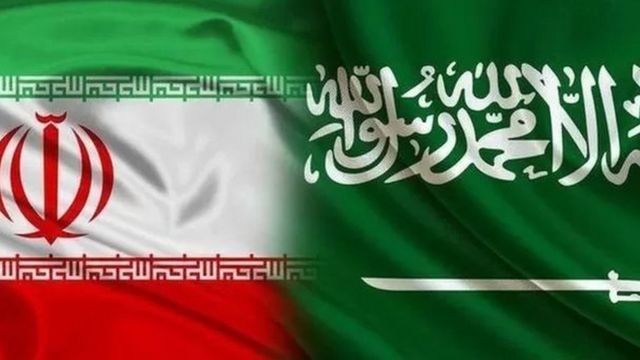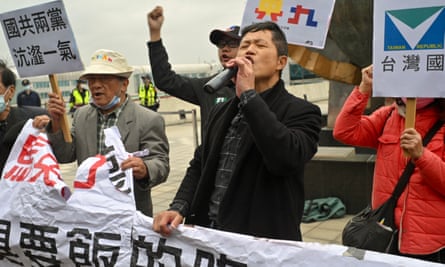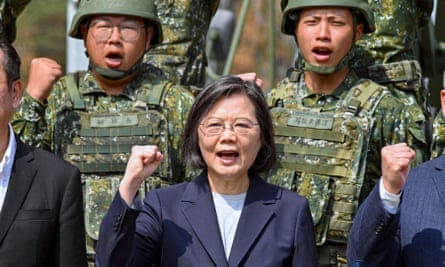
بوجود نتنياهو وبن غفير وسموتريتش في السلطة، فإن إسرائيل ليست بحاجة إلى أعداء
د. محمد مكرم البلعاوي
الوضع في إسرائيل قاتم. أطاح بنيامين نتنياهو بوزير دفاعه الذي حذر من حدوث تمرد للقوات المسلحة. تحدث المظاهرات والإضرابات يوميًا، حيث أصيبت البنوك والخدمات الصحية والنقابات العمالية والمطارات والموانئ بالانحدار. ولم يكن أمام رئيس الوزراء الإسرائيلي خيار سوى التراجع عن الإصلاح القضائي المقترح.
على الصعيد الدولي، لم يكن موقف إسرائيل أفضل. يقدم نتنياهو نفسه على أنه ملك الدبلوماسية الإسرائيلية والعلاقات الدولية، لكنه وحكومته المتطرفة شوهوا علاقات إسرائيل مع الجميع تقريبًا.
كما أن وزير المالية اليميني المتطرف بتسلئيل سموتريتش، على سبيل المثال، تعرض للسخرية في إسرائيل لاستقباله البارد في الولايات المتحدة ولغته الإنجليزية الرهيبة. وفي فرنسا، زاد من الضرر اللاحق بصورة إسرائيل وسياستها الخارجية. وفي حديثه من منصة مع خريطة “إسرائيل الكبرى” التي تضم الأردن وأجزاء من سوريا ولبنان، ادعى سموتريتش أنه لا يوجد “تاريخ أو ثقافة فلسطينية … [و] لا يوجد شيء اسمه شعب فلسطيني”. وجاءت هذه التصريحات بعد تعليقه العنصري بأنه “يجب القضاء” على قرية فلسطينية بعد أن اقتحم المستوطنون الإسرائيليون حوارة في الضفة الغربية المحتلة.
كما أن الأردن، التي وقعت معاهدة سلام مع إسرائيل في عام 1994 ولديها أطول حدود مع دولة الاحتلال، عبرت عن غضبها بشكل خاص، حيث حدث ذلك بينما كانت واشنطن تقنع عمان وعواصم عربية أخرى بالتدخل مع الفلسطينيين لنزع فتيل موجة العنف الحالية. صوت البرلمان الأردني بالإجماع على قطع العلاقات الدبلوماسية مع إسرائيل، وأدانت الحكومة سموتريتش. ولم يثير خطاب الوزير سيئ السمعة الآن غضب الأردن فحسب، بل أغضب أيضًا المملكة العربية السعودية وسوريا والإمارات والجزائر والكويت والبحرين ومصر وعمان وإيران وجامعة الدول العربية ومنظمة التعاون الإسلامي والاتحاد الأوروبي وحلفاء تاريخيين مثل فرنسا وأمريكا.
لدى الأمريكيين أسباب كثيرة للغضب من نتنياهو وحكومته. على الرغم من النصائح والتحذيرات، فقد فعلوا عكس ما تريده واشنطن بالضبط. وزار مسؤولون سياسيون وأمنيون أميركيون المنطقة والتقى بنتنياهو وأعربوا عن استيائهم من حكومته، وخاصة الديماغوجيين اليميني المتطرف إيتامار بن غفير وسموتريتش، وقالوا إنهم لن يلتقوا بهم أو يتعاملوا معهم بشكل مباشر. حاول نتنياهو طمأنة الأمريكيين بالقول إن يديه على عجلة القيادة، وثبت خطأه على الفور تقريبًا. بعد أيام من تطميناته، حيث ذهب إلى الأردن والتقى بالملك عبد الله. قال كل من بن غفير وسموتريتش إنهما غير ملزمين بتعهداته للعاهل الأردني بشأن المسجد الأقصى والمستوطنات الإسرائيلية غير القانونية.
وقبل عشرة أيام، عُقدت قمة في منتجع شرم الشيخ المصري لتشجيع التعاون لوقف العنف في الضفة الغربية المحتلة. وشارك ممثلون عن إسرائيل والسلطة الفلسطينية، إلى جانب مسؤولين من الولايات المتحدة والأردن ومصر. حيث تم الاتفاق على أن تعلق إسرائيل التخطيط الاستيطاني لمدة ستة أشهر. بعد ذلك، ألغت الحكومة الإسرائيلية جزءًا من قانون فك الارتباط لعام 2005 الذي سحبت بموجبه المستوطنين من قطاع غزة وأربع مستوطنات في شمال الضفة الغربية. ووصف متحدث باسم وزارة الخارجية الأمريكية هذه الخطوة بأنها “استفزازية بشكل خاص وذات نتائج عكسية” ولا “تتفق” مع التزام إسرائيل تجاه الولايات المتحدة. واستدعى نائب وزيرة الخارجية السفير الإسرائيلي في واشنطن لمناقشة الأمر، وهي خطوة نادرة تشير إلى استياء الولايات المتحدة. ورد نتنياهو بالقول إن القانون رمزي بحت.
وخلال زيارته إلى ألمانيا، وهي دولة يطاردها الشعور بالذنب بشأن الهولوكوست لدرجة أنها نادراً ما تنتقد إسرائيل، تعرض نتنياهو للتوبيخ بأدب بسبب الإصلاح القضائي المقترح. وقال المستشار أولاف شولتز: “بصفتنا شركاء قيمين ديمقراطيين وأصدقاء مقربين لإسرائيل، فإننا نتابع هذا النقاش عن كثب – ولن أخفي ذلك – بقلق كبير”. وحث نتنياهو على محاولة إيجاد “أوسع إجماع اجتماعي ممكن” من خلال التعامل بإيجابية مع مبادرة الرئيس الإسرائيلي لنزع فتيل الأزمة. وأضاف شولتز: “نعلم أن الرئيس هرتسوغ قدم الليلة الماضية أيضًا مقترحات ملموسة لحل الوضع الصعب. بصفتنا أصدقاء لإسرائيل، نود أن نرى أن الكلمة الأخيرة لم تُقال بعد بشأن هذا الاقتراح”.
وحاول نتنياهو، كما يليق به، تبرير مقترحاته الإصلاحية المثيرة للجدل: “إسرائيل لديها قضاء مستقل، لكن الكثيرين يعتقدون أنها قوية للغاية … الاتهام بأننا نقطع الديمقراطية ليس صحيحًا”. كما يختلف عشرات الآلاف من الإسرائيليين المتظاهرين في الشوارع.
علاوة على ذلك، لم يقنع الرئيس الأمريكي جو بايدن. وقال “مثل العديد من المؤيدين الأقوياء لإسرائيل، أشعر بقلق شديد”. “وأنا قلق من أنهم يصلون إلى هذا الأمر بشكل صحيح. لا يمكنهم الاستمرار في هذا الطريق.” عندما سُئل عما إذا كان يخطط لإرسال دعوة لنتنياهو لزيارة البيت الأبيض قريبًا، أجاب بايدن: “لا، ليس في المدى القريب”.
مرة تلو الأخرى، يبدو أن نتنياهو ورفاقه المتطرفين مصممون على الإضرار بعلاقات إسرائيل مع الحليف الذي يزود دولة الاحتلال بما لا يقل عن 3.8 مليار دولار من المساعدات العسكرية الأمريكية كل عام.
وغرد نتنياهو بغطرسة “إسرائيل دولة ذات سيادة تتخذ قراراتها بإرادة شعبها وليس على أساس ضغوط من الخارج”، “بما في ذلك من أفضل الأصدقاء.”
في غضون ذلك، أشار وزيره بن غفير إلى أن إسرائيل “ليست نجمة أخرى على العلم الأمريكي. نحن دولة ديمقراطية وأتوقع أن يفهم الرئيس الأمريكي ذلك”.
وبوجود هؤلاء الأشخاص في السلطة، لا تحتاج إسرائيل إلى أي أعداء خارجيين.















